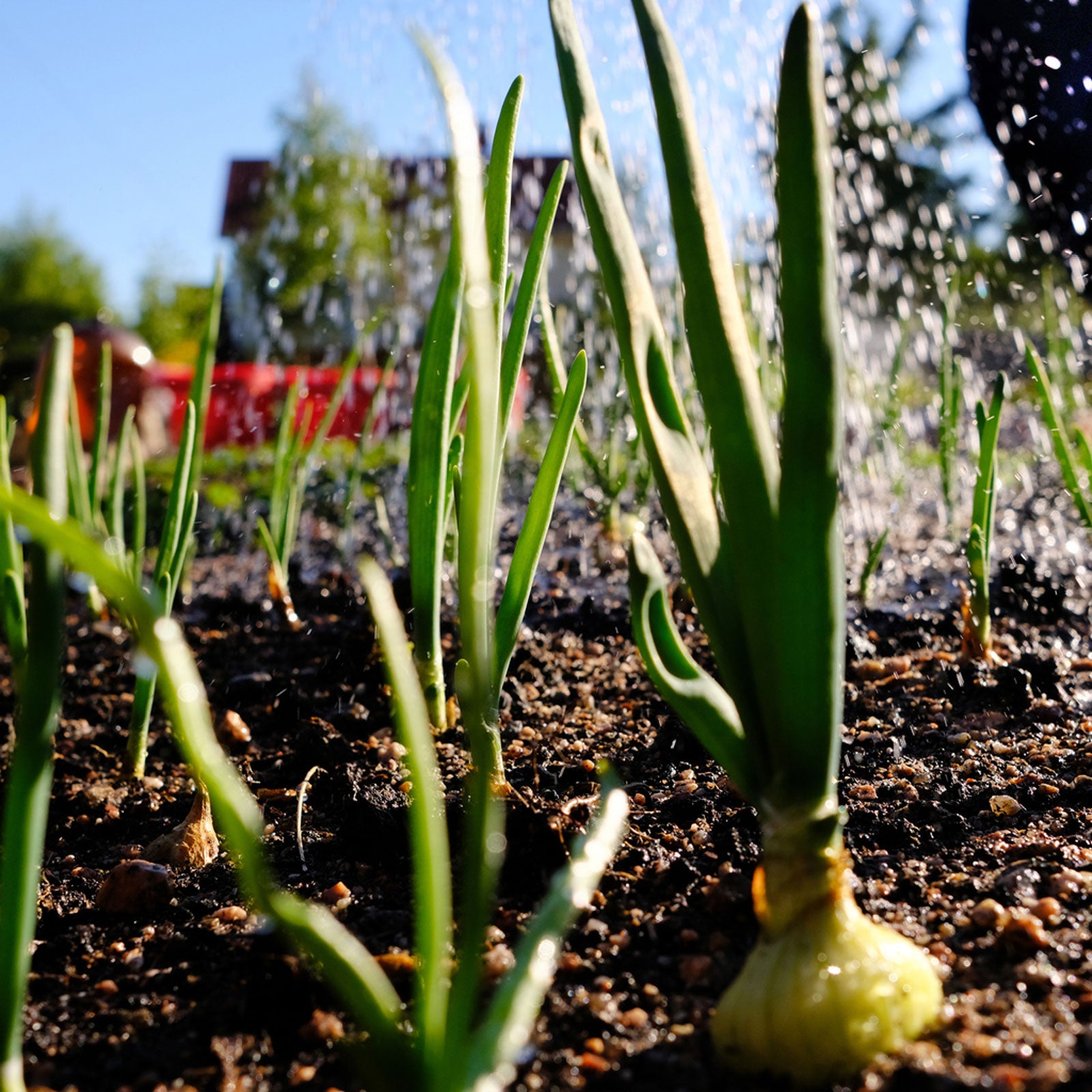Onion Water Needs: How To Irrigate Onions In Your Garden Bed
Watering onion plants successfully can be tricky. Too much or too little can cause problems. It’s a good idea to become familiar with the watering needs of onions so you can choose the best methods of irrigation.

Onion plant watering can be a tricky business. Too little water and the size and quality of the bulbs suffer; too much water and the plants are left open to fungal disease and rot. There are a couple different methods for watering onions, however, so it’s a good idea to familiarize yourself with overall onion watering needs before deciding on the best course of irrigation for you.
Onion Water Needs
Onions need a lot of water, but the soil should never get soggy. Ideal onion water needs are to irrigate to a depth of an inch (2.5 cm.) once a week rather than a light sprinkling each day.
If you are watering onions with a hose or sprinkler, water in the morning rather than during the heat of the day, which will just end up being evaporated.
Overhead watering can spell trouble. If you water in the evening, the foliage will stay wet overnight, which can foster disease. There are two other onion plant watering methods, though, that can alleviate the problem with wet foliage.
How to Irrigate Onions
Two other methods for onion plant watering, besides using a hose or sprinkler, are furrow irrigation and onion drip irrigation.
Furrow irrigation is just what it sounds like. Furrows are dug along the length of the onion row and flooded with water. This allows the plants to slowly soak up the water.
Onion drip irrigation involves the use of a drip tape, which is basically tape with punched holes that deliver water directly to the roots of the plants. This method for watering onions eliminates the issue of fungal disease that can result from overhead watering.
Sign up for the Gardening Know How newsletter today and receive a free copy of our e-book "How to Grow Delicious Tomatoes".
Install the tape in the center of the onion bed between rows at a depth of 3 to 4 inches (8-10 cm.) with emitter spacing about a foot (31 cm.) between emitters. Water occasionally and deeply; provide an inch (2.5 cm.) of water at each onion watering.
To tell if the plants have enough water, stick your finger in the ground next to the plants. If you can’t feel any moisture up to your first knuckle, it’s onion watering time.
Tips about Watering Onions
Onion seedlings should stay consistently moist until the plants take hold. Use a well-draining soil. Keep watering even when they are bulbing. This keeps the soil from compacting around the bulbs and allows them to swell and expand.
When the tops begin to die back, cut back on the amount of watering to prevent the tops from rotting.

Amy Grant has been gardening for 30 years and writing for 15. A professional chef and caterer, Amy's area of expertise is culinary gardening.
